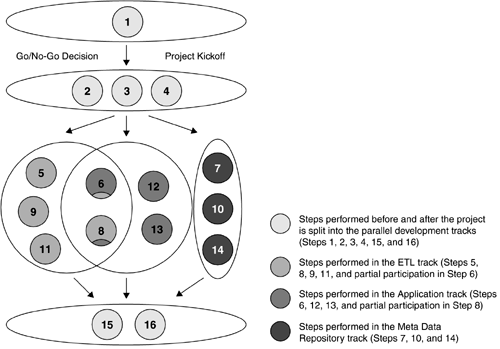Parallel Development Tracks
| As illustrated in Figure 0.7, every BI decision-support project has at least three development tracks running in parallel after the project requirements have been defined and before implementation.
Figure 0.7. Parallel Development Tracks (for Steps 5 “14) Table 0.2 maps the Business Intelligence Roadmap stages and steps across these three development tracks. These three parallel tracks can be considered major subprojects of a BI project. Each will have its own team members and its own set of activities after the project requirements have been formalized . Discoveries made in one track can (and often do) impact the other tracks. Figure 0.8 shows the interaction of the three tracks across the development steps. Figure 0.8. Steps Performed in Parallel Development Tracks Each development track has specific deliverables that contribute to the overall BI project objectives.
Table 0.2. Stages and Steps across Development Tracks
| ||||||||||||||||||||||||||||||||||||||||||||||||||||||||||||||||||||||||||||||||||||||||||||||||||||
EAN: 2147483647
Pages: 202


